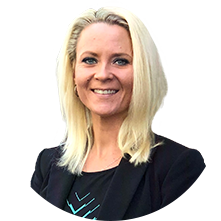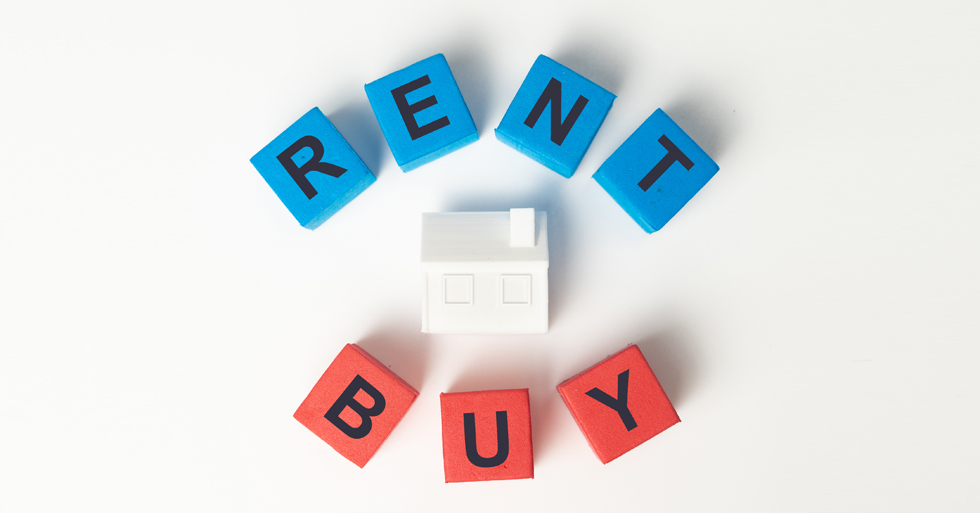Since real estate is local, whether it makes more financial sense to continue renting or to buy depends on where one lives. However, typical rent-versus-own calculations fail to include the main financial benefit of owning, which is the accumulation of equity. While rare, house price declines can make it more costly to own a home, but after accounting for house price changes, the rent-versus-own dynamic generally shifts in favor of owning in most markets.
“Despite the rise in house prices, this analysis shows that the wealth-building effect of home equity should not be overlooked in the rent-versus-own decision. As we navigate an uncertain housing market, one thing remains clear: the long-term financial benefits of owning a home can make it a worthwhile investment.”
Breaking Down the Cost to Own
Calculating the cost of renting is simple – it’s the amount of rent paid every month. Calculating the monthly cost of owning a home is more complex, it includes taxes, repairs, homeowner’s insurance and the monthly mortgage principal and interest payments. In our analysis, the monthly cost of homeownership assumes the hypothetical first-time home buyer is taking out a 30-year, fixed-rate mortgage with a 5 percent down payment on a home at the 25th percentile sale price in their market in the second quarter of 2024. Finally, the monthly cost to own factors in the potential benefit of equity accumulation through house price appreciation.
After accounting for the total monthly homeownership cost and comparing it with the median rent by market, renting was a better financial choice in 48 out of the top 50 markets in the second quarter of 2024. However, once the accumulation of equity from house price appreciation is included, it was cheaper to own in 29 of the top 50 markets, including the two of most expensive rental markets, San Jose, Calif. and San Diego.
Why Rent When the House Pays You?
The graph below compares the cost of renting with the cost of owning adjusted for house price appreciation by market. How did San Jose flip from a market where it makes more sense to rent, to one where it’s more financially prudent to own?
Consider a potential first-time home buyer in San Jose, where home prices are among the highest of the top 50 markets. If the home buyer put a 5 percent down payment on a $1.1 million home (the 25th percentile home price in San Jose in the second quarter) with a mortgage rate of 7 percent, the home buyer would have paid roughly $7,000 monthly in principal and interest, plus an estimated $2,500 in taxes, repairs, private mortgage insurance, and homeowner’s insurance costs. That brings the home buyer’s total monthly cost of ownership to approximately $9,500. House prices in San Jose, Calif. increased nearly 8 percent year over year in the second quarter of 2024, which equates to an equity benefit of approximately $7,300 each month, if the pace of appreciation remains the same. The resulting total monthly cost to own is $2,150. Compared with the median monthly cost of rent, $2,700, it made more financial sense to buy than to rent in the second quarter.
Conversely, there was one market in our analysis where house prices declined on an annual basis – Austin, Texas. If the home buyer put a 5 percent down payment on a $355,600 home (the 25th percentile home price in Austin in the second quarter) with a mortgage rate of 7 percent, the home buyer would have paid roughly $2,250 monthly in principal and interest, plus an estimated $1,020 in taxes, repairs, private mortgage insurance, and homeowner’s insurance costs. That brings the home buyer’s total monthly cost of ownership to approximately $3,270. The average house price in Austin decreased 1.2 percent year over year in the second quarter of 2024, which equates to an equity loss of approximately $350 each month if the pace of depreciation remains the same. The resulting total monthly cost to own is approximately $3,600. Compared with the median monthly cost of rent, $1,530, it made more financial sense to rent than to buy in the second quarter.
What’s the Outlook for Generation Z?
For those trying to buy a home, house price appreciation can be intimidating and makes the purchase more expensive. However, once the home is purchased, appreciation helps build equity in the home, and becomes a benefit, rather than a cost. Perhaps this is why Mark Twain famously advised, "Buy land, they’re not making it anymore." So, what does this mean for the generation beginning to age into their prime home-buying years? Despite the rise in house prices, this analysis shows that the wealth-building effect of home equity should not be overlooked in the rent-versus-own decision. As we navigate an uncertain housing market, one thing remains clear: the long-term financial benefits of owning a home can make it a worthwhile investment.
Methodology
The rent-versus-buy analysis compares monthly rental payments with the cost of ownership in the top 50 U.S. metropolitan cities. Median rent is calculated from the 2023 American Community Survey micro data, the latest year available, and extrapolated to Q2 2024 using the Zillow Observed Rent Index. Home price sales, property tax rates, and house price appreciation by market are derived from First American Data & Analytics data. Further, the monthly ownership cost is calculated by combining monthly mortgage payments, interest, taxes and insurance (PITI), assuming a down payment of 5 percent and an interest rate of 7.0 percent, which is the average for a 30-year, fixed rate mortgage in Q2 2024. Because the down payment assumed is less than 20 percent, private mortgage insurance is added to the cost of ownership at a rate of 0.75 percent of the home value. Annual homeowner’s insurance is assumed to be 0.4 percent of the home value, and annual repair costs are assumed to be 1 percent of the home value. To account for the accumulation of equity, the annual rate of house price appreciation between Q2 2023 and Q2 2024 is turned into a dollar amount based on the home sale price and divided across 12 months. This monthly equity gain (or loss) is subtracted from the monthly cost of homeownership, resulting in the house price appreciation-adjusted monthly homeownership cost.
Nathan DeWitte contributed to this blog post.
Follow Hashtags: #HomesWithHollyLLC #MSRE #SellingAndBuyingMadeEasy #StartPacking #WelcomeHome #HollyMahaffeyRealtor

 Holly Mahaffey
Holly Mahaffey 













